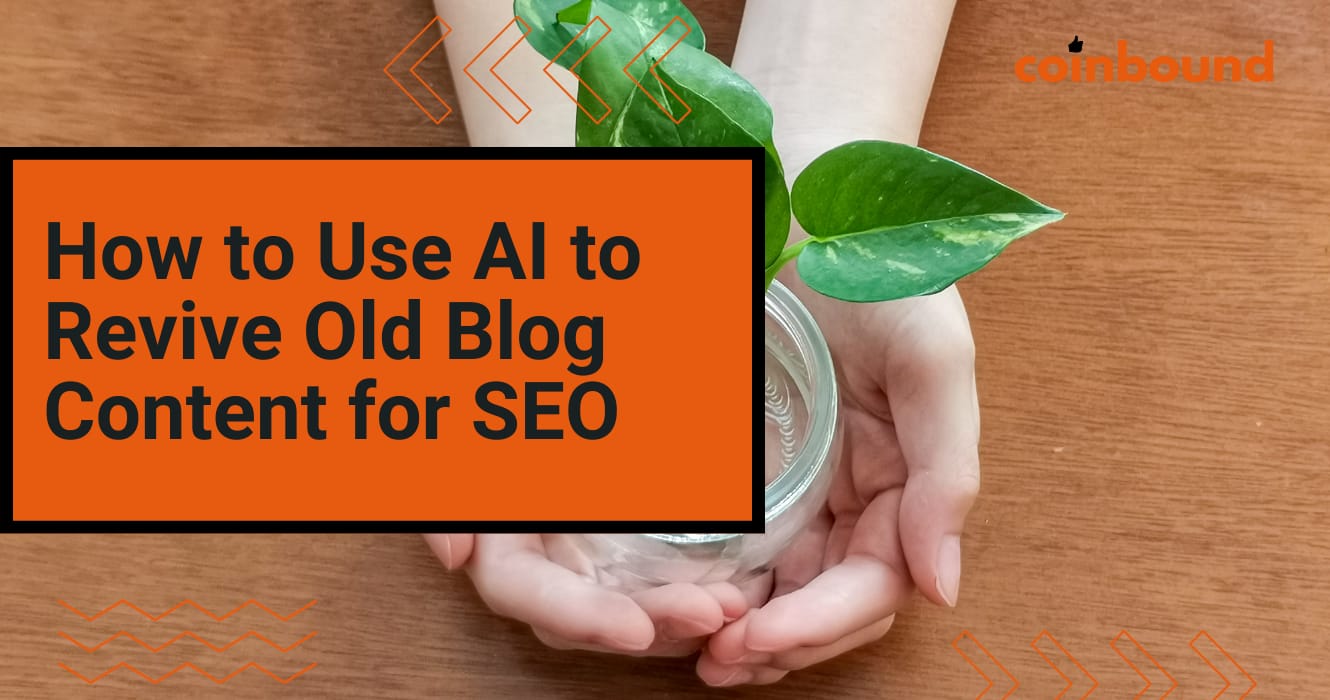In the ever-evolving world of digital marketing, staying ahead of the curve is essential for maintaining and improving your website’s search engine rankings. One effective strategy to boost your SEO efforts is to revive old blog content using artificial intelligence (AI). In this comprehensive guide, we’ll explore how marketers can leverage AI to breathe new life into their old blog posts, driving more traffic and engagement.
Why Revive Old Blog Content?
Before delving into the details of how to use AI for this purpose, let’s briefly discuss why it’s important to revive old blog content:
- Improves SEO Ranking: Google’s algorithms tend to favor fresh and relevant content. By updating and optimizing older posts, you can signal to search engines that your website is active and continually providing valuable information.
- Enhances User Experience: Outdated content can lead to a poor user experience. Reviving old blog posts ensures that your audience gets up-to-date and accurate information, leading to higher engagement and satisfaction.
- Saves Time and Resources: While creating new content is important, it can be resource-intensive. Reviving old content allows you to maximize the value of existing assets, saving time and effort.
Now, let’s explore how AI can assist you in this process:
1. Content Audit and Selection
The first step in reviving old blog content using AI is to identify which posts are worth updating. AI-powered content audit tools can help you analyze your entire content library to determine which articles have the most potential for improvement. Here’s how to do it:
Actionable Steps:
a. Use AI Content Audit Tools:
- Tools like SEMrush, Ahrefs, and Clearscope offer AI-driven content audits. Enter your website’s URL to generate a report that highlights which posts need attention based on factors like traffic, backlinks, and relevance.
b. Analyze Historical Performance:
- Review analytics data to identify posts that used to perform well but have seen a decline in traffic. These posts may benefit from updates.
c. Prioritize High-Value Content:
- Focus on blog posts that are evergreen, address common pain points, or have the potential to drive significant traffic.
2. Content Enhancement with AI
Now that you’ve selected the posts to revive, it’s time to use AI to enhance their quality and relevance. AI can help with content optimization, keyword research, and even suggest related topics to cover. Here’s how:
Actionable Steps:
a. Keyword Research:
- Utilize AI-powered keyword research tools like Moz Keyword Explorer, Ubersuggest, or SurferSEO to identify relevant keywords and phrases for your old posts.
b. Content Optimization:
- Use AI-driven tools like Grammarly or ProWritingAid to improve the readability and quality of your content. These tools can also help you adhere to SEO best practices.
c. Add Multimedia Elements:
- AI tools like Adobe Sensei can assist in generating visuals, infographics, or videos to make your old posts more engaging.
3. Updating Statistics and Data
In many cases, old blog posts become outdated due to changes in statistics or data. AI can help you keep your content fresh by automatically updating these elements.
Actionable Steps:
a. Utilize Data Scraping Tools:
- Use AI-powered data scraping tools to monitor and update statistics in your blog posts. Tools like Import.io and Octoparse can automate this process.
b. Implement Data Visualization:
- Turn data into compelling visuals using AI tools like Tableau or Datawrapper to make your content more informative and appealing.
4. Content Personalization
AI can also help personalize old blog content to make it more relevant to individual users. Personalization can significantly enhance user engagement and the likelihood of conversion.
Actionable Steps:
a. Implement Personalization Algorithms:
- Use AI-driven algorithms to recommend related blog posts to users based on their browsing history and preferences. Tools like Outbrain and Taboola can help with this.
b. Dynamic Content Blocks:
- Implement dynamic content blocks that adjust based on user behavior and preferences. AI tools can help in real-time content personalization.
5. A/B Testing
Once you’ve updated and personalized your old blog content, it’s crucial to test its effectiveness. AI can help you run A/B tests to optimize your content further.
Actionable Steps:
a. Choose an A/B Testing Platform:
- Platforms like Optimizely and Google Optimize use AI algorithms to analyze user behavior and provide insights into which variations of your content perform best.
b. Test Headlines and CTAs:
- Experiment with different headlines, calls to action (CTAs), and content layouts to determine which combinations yield the best results.
6. Monitor and Iterate
The process of reviving old blog content with AI is an ongoing effort. After implementing the above strategies, it’s essential to continually monitor the performance of your updated posts and iterate as needed.
Actionable Steps:
a. Track Metrics:
- Regularly check key performance metrics like traffic, engagement, conversion rates, and search engine rankings to gauge the success of your revived content.
b. Iterate Based on Data:
- Use AI-powered analytics tools to gain insights from user behavior and feedback. Make data-driven decisions to refine your content further.
Conclusion
Reviving old blog content with AI is a powerful strategy for boosting your website’s SEO and improving user engagement. By conducting a thorough content audit, optimizing, personalizing, and testing your old posts, you can leverage AI to breathe new life into your digital assets. Remember that SEO is an ongoing process, so regularly update and monitor your content to stay ahead in the digital marketing game. With AI as your ally, you can achieve better search engine rankings, increased traffic, and higher user satisfaction. Start implementing these actionable steps today to revive your old blog content and supercharge your SEO efforts.








